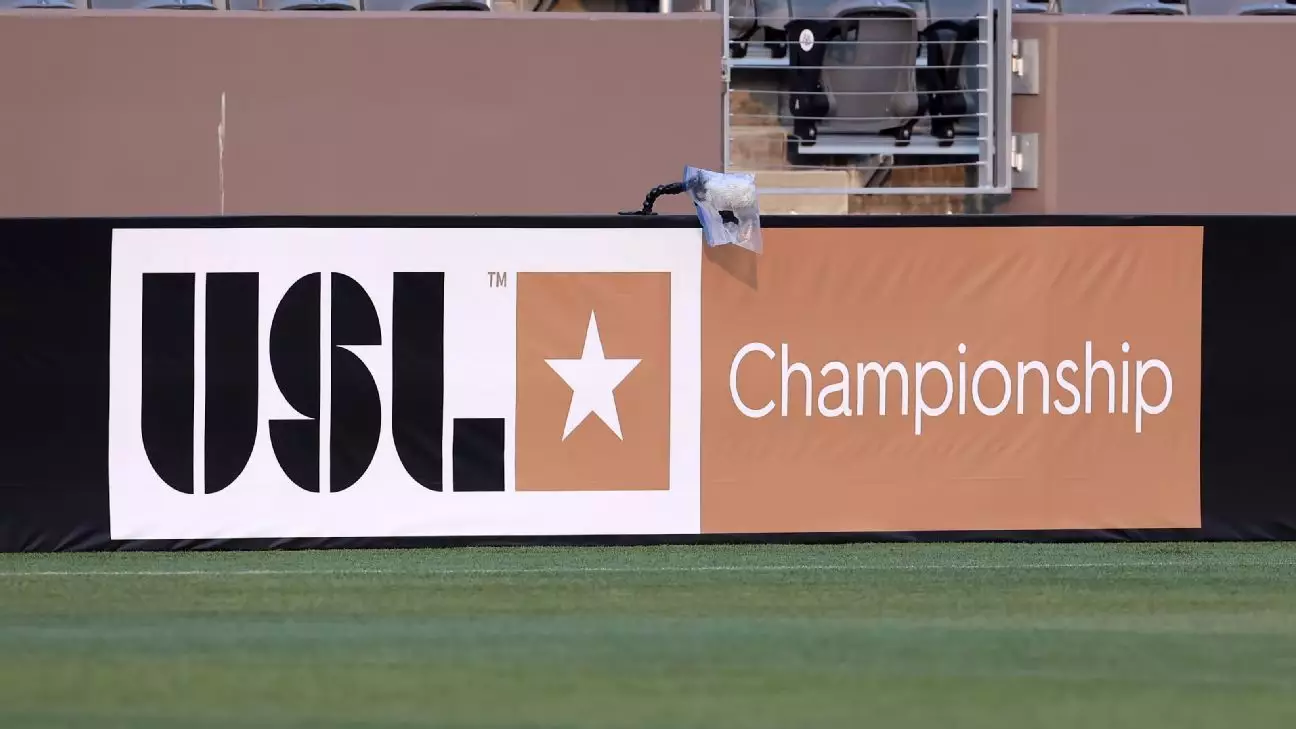The landscape of American soccer is on the brink of transformation as the United Soccer League (USL) prepares to introduce a new Division One men’s professional league by 2027. Intended to compete directly with Major League Soccer (MLS), this initiative represents a significant shift in the structure and accessibility of soccer in the U.S. Unlike MLS, which has historically operated as the sole premier league, this new venture heralds an expanded umbrella of top-tier soccer, promoting inclusivity and accessibility to professional gameplay across more cities.
Alec Papadakis, the CEO of USL, has articulated a vision that emphasizes community engagement and the democratization of soccer within the United States. He asserts that the launch of a Division One league marks a pivotal moment in the evolution of the sport. By creating opportunities for emerging talent and uniting communities behind local clubs, the USL aims to foster a deeper connection between fans and their teams. Papadakis’s comments reflect a broader strategy that moves beyond merely establishing a competitive environment; it promotes an ecosystem where soccer can flourish at all levels.
The importance of this new league cannot be overstated. As soccer continues to grow in popularity in the U.S., the need for a structured, tiered system becomes more pronounced. The USL’s approach to creating a Division One league establishes a framework that encourages local talent to rise through the ranks, ultimately revitalizing local communities through soccer. This model is not only innovative for American sports but also aligns with global practices where promotion and relegation are standard.
U.S. Soccer, in its public statements supporting the USL’s announcement, recognizes the implications of this new structure on the overall growth of the sport. The upcoming hosting of prestigious international events such as the 2026 FIFA World Cup and the 2025 FIFA Club World Cup is expected to enhance interest in soccer, providing fertile ground for the growth of professional leagues. The USL’s expansion into Division One can contribute significantly to the burgeoning soccer culture that is already gaining momentum, particularly among youth participants and amateur leagues.
The promotion of a promotion and relegation system distinguishes the USL from MLS, underscoring a commitment to competition that rewards performance and growth. This characteristic could spark greater fan engagement, as supporters of clubs in lower divisions will have attainable goals to work toward, fostering a sense of rivalry and community ownership of their teams.
The USL’s history, dating back to 1986, is marked by a commitment to creating pathways from youth soccer to professional levels. The league has established women’s divisions, including the USL Super League and the USL W League, which shows a commitment not just to inclusivity but to equitable growth across genders in the sport. This foundational work aligns with the USL’s current ambitions, suggesting a holistic development approach that incorporates both men’s and women’s leagues.
Looking forward, the environment for soccer in the United States appears ripe for development. Rising interest rates among the public, two major international tournaments on the horizon, and a solidified growth model could position soccer firmly as a leading sport in the country. The USL’s new Division One league is a significant step towards realizing this potential, as it offers a structured platform for talent to emerge, thereby bolstering the national narrative of soccer.
The establishment of a Division One league by the United Soccer League is more than just an announcement; it represents a paradigm shift in American soccer. By prioritizing community connection, enabling player progression, and fostering competition, the USL is not just creating a league but redefining the sport’s future in the U.S. As this ambitious project unfolds, soccer enthusiasts and stakeholders alike will be watching closely to see how these changes will shape the next generation of soccer in America, ultimately contributing to a vibrant and sustainable ecosystem in the sport.

